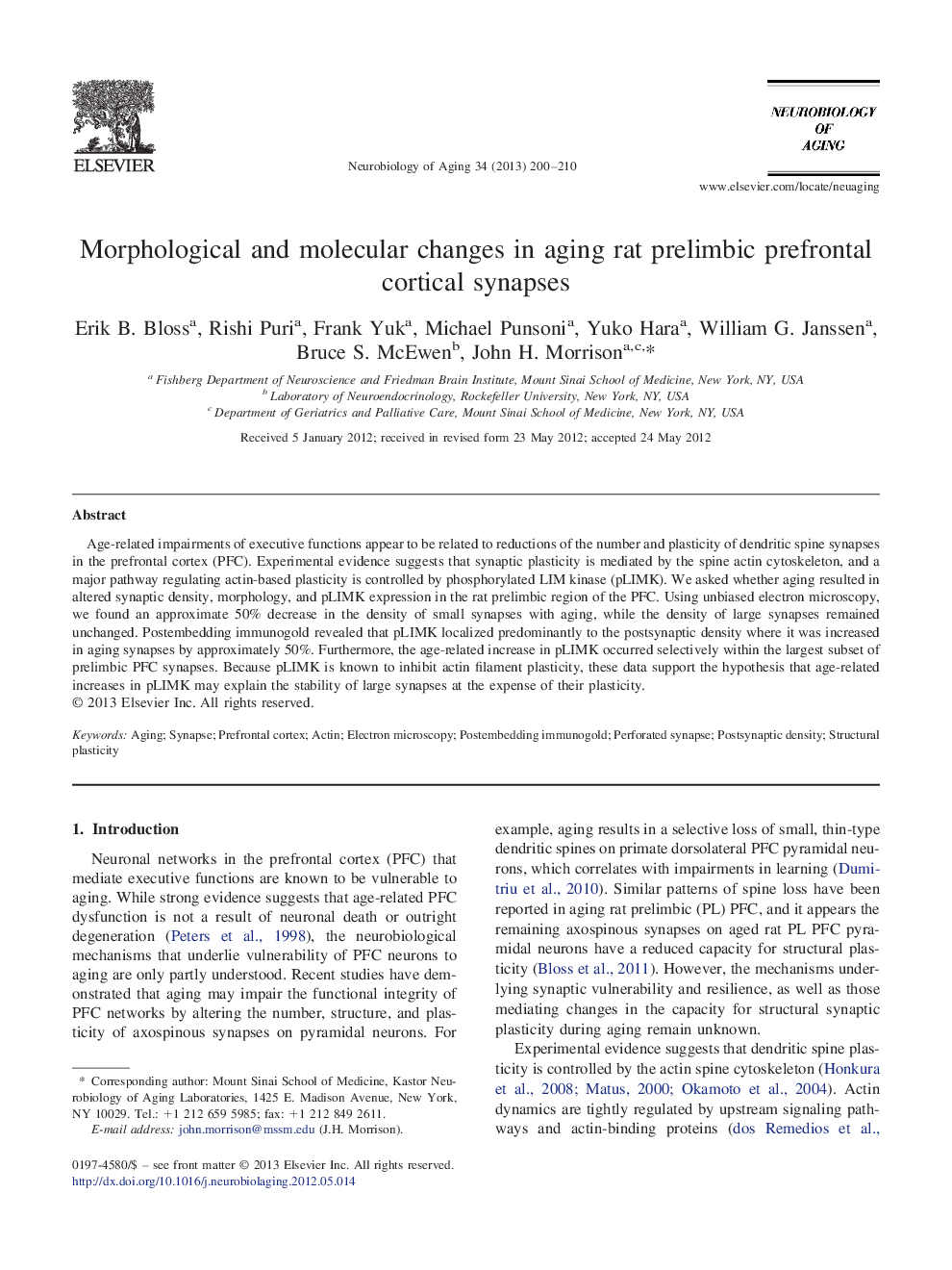| Article ID | Journal | Published Year | Pages | File Type |
|---|---|---|---|---|
| 6807948 | Neurobiology of Aging | 2013 | 11 Pages |
Abstract
Age-related impairments of executive functions appear to be related to reductions of the number and plasticity of dendritic spine synapses in the prefrontal cortex (PFC). Experimental evidence suggests that synaptic plasticity is mediated by the spine actin cytoskeleton, and a major pathway regulating actin-based plasticity is controlled by phosphorylated LIM kinase (pLIMK). We asked whether aging resulted in altered synaptic density, morphology, and pLIMK expression in the rat prelimbic region of the PFC. Using unbiased electron microscopy, we found an approximate 50% decrease in the density of small synapses with aging, while the density of large synapses remained unchanged. Postembedding immunogold revealed that pLIMK localized predominantly to the postsynaptic density where it was increased in aging synapses by approximately 50%. Furthermore, the age-related increase in pLIMK occurred selectively within the largest subset of prelimbic PFC synapses. Because pLIMK is known to inhibit actin filament plasticity, these data support the hypothesis that age-related increases in pLIMK may explain the stability of large synapses at the expense of their plasticity.
Keywords
Related Topics
Life Sciences
Biochemistry, Genetics and Molecular Biology
Ageing
Authors
Erik B. Bloss, Rishi Puri, Frank Yuk, Michael Punsoni, Yuko Hara, William G. Janssen, Bruce S. McEwen, John H. Morrison,
